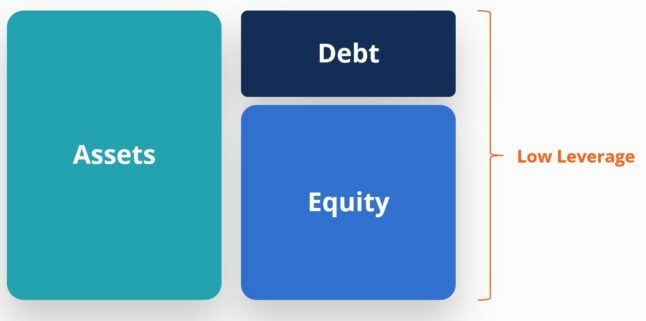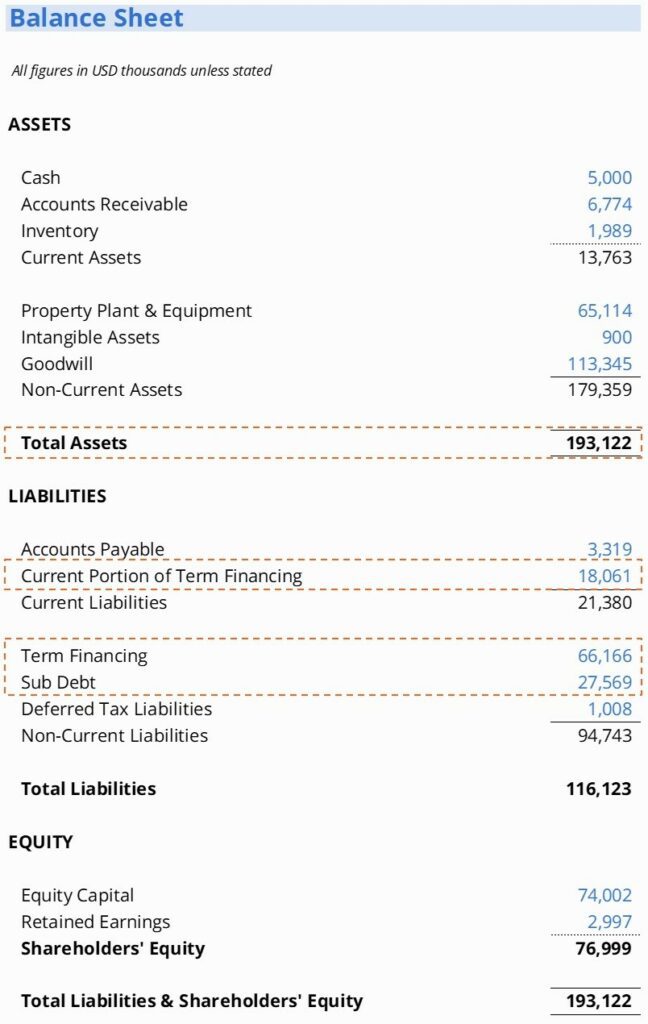Debt to Asset Ratio
Measuring the proportion of a company’s assets that are funded by debt
What is the Debt to Asset Ratio?
The debt to asset ratio is a financial metric used to help understand the degree to which a company’s operations are funded by debt. It is one of many leverage ratios that may be used to understand a company’s capital structure.
The debt to asset ratio is calculated by using a company’s funded debt, sometimes called interest bearing liabilities. This refers to actual credit provided by direct lenders for which there are interest obligations (like bonds, term loans from a commercial bank, or subordinated debt); the ratio does not include total liabilities (like accounts payable, etc.).

The total funded debt — both current and long term portions — are divided by the company’s total assets in order to arrive at the ratio. This ratio is sometimes expressed as a percentage (so multiplied by 100).
Key Highlights
- Debt to assets is one of many leverage ratios that are used to understand a company’s capital structure.
- The ratio represents the proportion of the company’s assets that are financed by interest bearing liabilities (often called “funded debt.”)
- The higher the ratio, the greater the proportion of debt funding and the greater the risk of potential solvency issues for the business.
- There is no absolute “good” or “ideal” ratio; it depends on many factors, including the industry and management preference around debt funding.
Understanding Leverage
The fundamental accounting equation is Assets = Liabilities + Equity. And while not all liabilities are funded debt, the equation does imply that all assets are funded either by debt or by equity.

A company with a higher proportion of debt as a funding source is said to have high leverage.

A company with a lower proportion of debt as a funding source is said to have low leverage.
Calculating the Debt to Asset Ratio
Looking at the following balance sheet, we can see that this company has employed funded debt in its capital structure.

In order to calculate the debt to asset ratio, we would add all funded debt together in the numerator: (18,061 + 66,166 + 27,569), then divide it by the total assets of 193,122.
In this case, that yields a debt to asset ratio of 0.5789 (or expressed as a percentage: 57.9%).
Debt to Asset Ratio Explained
Of all the leverage ratios used by the analyst community to understand the financial position of a company, debt to assets tends to be one of the less common ones.
It represents the proportion (or the percentage of) assets that are financed by interest bearing liabilities, as opposed to being funded by suppliers or shareholders. As a result it’s slightly more popular with lenders, who are less likely to extend additional credit to a borrower with a very high debt to asset ratio.
In the above-noted example, 57.9% of the company’s assets are financed by funded debt. As with any ratio, however, it can’t be taken in isolation. Analysts will want to compare figures period over period (to assess the ratio over time), or against industry peers and/or a benchmark (to measure its relative performance).
A valid critique of this ratio is that the proportion of assets financed by non-financial liabilities (accounts payable in the above example, but also things like taxes or wages payable) are not considered. In other words, the ratio does not capture the company’s entire set of cash “obligations” that are owed to external stakeholders – it only captures funded debt.
Important Considerations about the Debt to Asset Ratio
There is no perfect score or ideal debt to asset ratio. As with all financial metrics, a “good ratio” is dependent upon many factors, including the nature of the industry, the company’s lifecycle stage, and management preference (among others).
Some important considerations include the following:
- A ratio approaching 1 (or 100%) is an extraordinarily high proportion of debt financing. This would be unsustainable over long periods of time as the firm would likely face solvency issues and risk triggering an event of default.
- A debt to asset ratio that’s too low can also be problematic. While unlikely to cause solvency issues, it could indicate poor capital structure decisions by management, resulting in a suboptimal return on equity for the firm’s shareholders.
- The ratio is only useful in comparing businesses within the same industry, as the capital structures of different industries are specific to those industries. For example, for industries where there is a large proportion of tangible assets (like A/R, inventory, equipment, and commercial real estate), the book value of intangible assets may be minimal. Intuitively, such companies cannot be compared to other companies in industries that have a comparable funded debt to asset ratio, but where the assets are mostly held in intangible forms (goodwill, trademarks, patents, etc.).
- One European Central Bank study suggests that for micro-, small-, and medium-sized firms, a ratio above 0.80-0.85 (80-85%) negatively affects capital investments in the levered firms[1].
Additional Resources
Financial Analysis Fundamentals
Analyst Certification FMVA® Program
Below is a break down of subject weightings in the FMVA® financial analyst program. As you can see there is a heavy focus on financial modeling, finance, Excel, business valuation, budgeting/forecasting, PowerPoint presentations, accounting and business strategy.
A well rounded financial analyst possesses all of the above skills!
Additional Questions & Answers
CFI is the global institution behind the financial modeling and valuation analyst FMVA® Designation. CFI is on a mission to enable anyone to be a great financial analyst and have a great career path. In order to help you advance your career, CFI has compiled many resources to assist you along the path.
In order to become a great financial analyst, here are some more questions and answers for you to discover:
- What is Financial Modeling?
- How Do You Build a DCF Model?
- What is Sensitivity Analysis?
- How Do You Value a Business?
Accounting Crash Courses
Learn accounting fundamentals and how to read financial statements with CFI’s online accounting classes.
These courses will give you the confidence to perform world-class financial analyst work. Start now!
Boost your confidence and master accounting skills effortlessly with CFI’s expert-led courses! Choose CFI for unparalleled industry expertise and hands-on learning that prepares you for real-world success.

